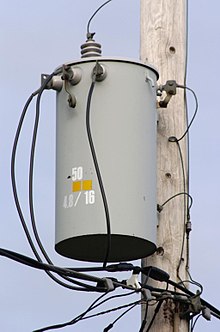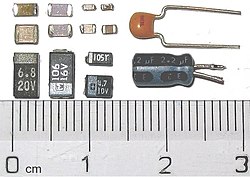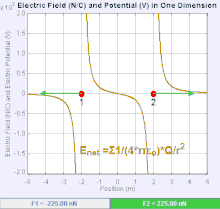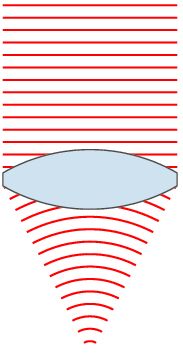THE DEVICE WHICH IS USED TO CHANGE THE VOLTAGE.
OR
A transformer is a power converter that transfers AC electrical energy through inductive coupling between circuits of the transformer's windings. A varying current in the primary winding creates a varying magnetic flux in the transformer's core and thus a varying magnetic flux through the secondary winding. This varying magnetic flux induces a varying electromotive force (EMF), or "voltage", in the secondary winding. This effect is called inductive coupling.
If a load is connected to the secondary winding, current will flow in this winding, and electrical energy will be transferred from the primary circuit through the transformer to the load. Transformers may be used for AC-to-AC conversion of a single power frequency, or for conversion of signal power over a wide range of frequencies, such as audio or radio frequencies.
In an ideal transformer, the induced voltage in the secondary winding (Vs) is in proportion to the primary voltage (Vp) and is given by the ratio of the number of turns in the secondary (Ns) to the number of turns in the primary (Np) as follows:
Transformers range in size from a thumbnail-sized coupling transformer hidden inside a stage microphone to huge units weighing hundreds of tons used in power stations, or to interconnect portions of power grids. All operate on the same basic principles, although the range of designs is wide. While new technologies have eliminated the need for transformers in some electronic circuits, transformers are still found in nearly all electronic devices designed for household ("mains") voltage. Transformers are essential for high-voltage electric power transmission, which makes long-distance transmission economically practical.



 .
.




 .
.



 OAB and
OAB and 

 the above equation can be written as
the above equation can be written as





